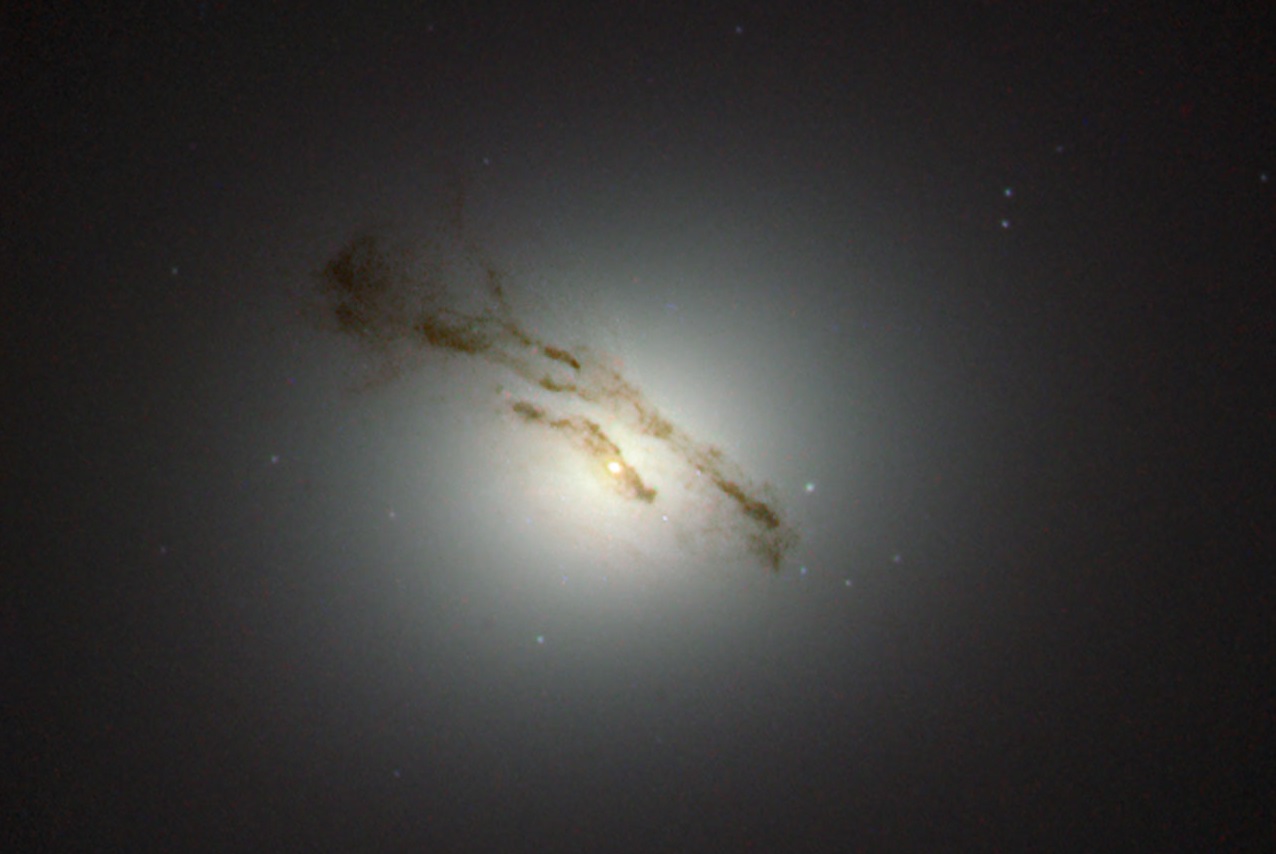In this series we are exploring the weird and wonderful world of astronomy jargon! You’ll try to get back in shape with today’s topic: elliptical galaxies!
Elliptical galaxies are the retirement centers of the universe. They are filled with old, red stars and have very little active star formation. Even if they wanted to, they couldn’t make more stars, since they have relatively thin stores of interstellar gas and dust. The stars inside ellipticals are just sitting there, slowly burning through their reserves of hydrogen, dying off one by one.
How did elliptical galaxies get to be so sad? The famed astronomer Edwin Hubble first thought that these galaxies eventually evolved into spirals, but now we know that the opposite is more accurate. When large galaxies collide, the shock of that collision triggers a round of intense star formation. That uses up all the available fuel in a relatively short amount of time. Soon after the collision, new star formation ceases and the galaxy begins its slow decline.
This merger scenario also explains the shape and structure of ellipticals. In spiral galaxies, stars tend to rotate around the center in long orbits. But in ellipticals, they tend to ping-pong, moving from one edge of the galaxy to the other. This is because the merger process randomizes the orbits of all the stars, mixing them up and destroying the rotation pattern.
Elliptical galaxies are also relatively featureless. They are generally round, and usually longer in one direction than the others. The smallest ellipticals are no bigger than a tenth the size of the Milky Way, while the largest are a hundred times bigger.
Ellipticals are also relatively rare, with only 10-15% of all galaxies getting the classification. They also tend to be found in galaxy clusters, which are dense clumps of a thousand or more galaxies. There, the frequent interactions lead to major merger events, which form the ellipticals.

